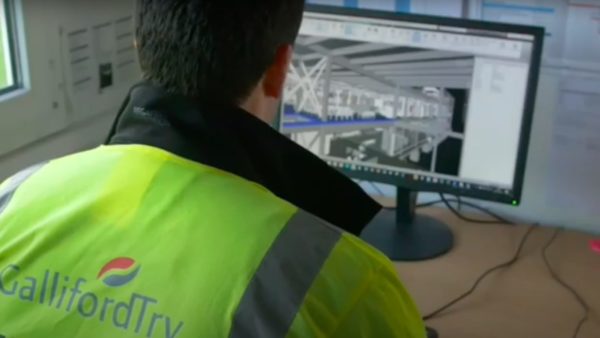The global Covid-19 pandemic has presented the world with challenges like never before. But by forcing our industry to change the way we work, it’s also given us an opportunity to use this time wisely to become better-equipped for the digital future, say by Neil Thompson and Zane Ulhaq.

Neil Thompson

Zane Ulhaq
The coronavirus lockdown has forced business process change on us all; whether we like it or not, working from home has meant we’ve had to plug in, log on, and collaborate with in-house teams and clients in ways that many of us have never had to before.
Unlike most change management programmes, this one has been sudden and unplanned. But it has also provided unexpected opportunities for us to explore and use what’s available in the virtual space to help us safeguard business continuity. Of course, this shift isn’t easy for everyone. We can no longer walk over to a colleague’s desk for that all-important second opinion.
But as we come to terms with the new normal, it’s our obligation to try a different approach – or what’s the alternative? Grinding to a halt? The good news is, many tools to help us are already out there. User-friendly, smart technology that can bring us together to collaborate and offer a rich remote experience for our clients. Technology that lets us interact with designs, make comments, capture and discuss them. This is the way we’re working now, across Atkins – with laptops and an internet connection as our chief tools.
When it comes to working remotely, putting designs for critical national infrastructure projects into the cloud presents obvious security concerns. But incredible advances in security, certifiable software, encryption and decryption means we can work in this way while keeping our precious data safe.
One service we have come to use widely is 3D Repo – a leading-edge start-up company that has grown out of technology developed by a UCL computer science graduate. It’s a gamechanger in building information modelling across the construction industry. The 3D Repo platform sits in the cloud, which basically means anyone online who’s using a web-browser with the right credentials can log in and use it.
Instead of clients sharing huge files, they access a specially encrypted knowledge base to follow project progress in the virtual space. For Atkins, it lets us do some really clever things beyond the design elements, including manage risk by enabling us to document and connect all project data. There is no room for error: everyone can see in real-time what changes are made, and what data is added, so it’s a single source of truth. Furthermore, because it runs through a web browser, the end user does not even need to install anything, as everything is done in the cloud using the same encryption technology as online banking.
We can also integrate it with Microsoft Teams, and connect the outcomes of team conversations to the model, which helps mitigate risk by crowdsourcing opinion and observations – just as we would when visiting a physical construction site where eyes on the ground really matter.
Change of behaviour
This kind of technology also has the power to influence positive behaviour and help us change how we execute day-to-day tasks. For example, when health and safety risks are documented, there is no automated time stamp against when they’re recorded. But with new applications tracking, and timestamps part of an immutable audit trail, you can’t change history. And so, it prompts us to document risks throughout the project lifecycle pro-actively, and not just right at the end.
The award-winning SafetiBASE proof-of-concept tool, led by Atkins and developed by a consortium of 3D Repo, HS2, Mott Macdonald, Costain, Balfour Beatty, the Institute of Engineering and Technology and UCL, is another way that tech can bring together people and processes to radically improve health and safety risk management throughout the project lifecycle. Using open source technology, SafetiBASE reduces inconsistencies by putting project health and safety risk data into a digitised, uniform format to support consistency, from start to finish. It’s also transferable and could be used across sectors from nuclear power stations to airport terminals.
As we acquire new skills, using these new tools and technologies, we are slowly realising the added benefits they offer – so, it’s perfectly plausible we will want to continue in the same way. The benefits go far beyond the technology. Less need to commute means valuable family time back; presenteeism as a culture is eradicated because we’re all proven trustworthy in getting the job done at home. These shifts matter, too, and they’re happening right now.
This begs a final question: what will be the role of expensive city offices when the pandemic is over? Perhaps they’ll reduce in size and become valued meeting venues for occasional face-to-face workshops, or problem-solving or team-building exercises. It’s likely they won’t be needed in the same ways as before. Could this perhaps even be a catalyst that opens up opportunities to push savings into greater technology strategies that underpin delivery?
Looking ahead, knowledge, trust and resilience in this new way of working will have built up. Perhaps it will demonstrate how remote working doesn’t just work well, but in many instances, it works better.
Neil Thompson is director of digital construction, and Zane Ulhaq is digital engineering manager, within Transportation for Atkins. They form part of the team responsible for the definition and implementation of a global transformation programme, that is transforming the construction sector through implementing new technologies, processes and practices on projects, including the National Digital Twin programme and SafetiBase.
Main image: Funtap P/Dreamstime.com















